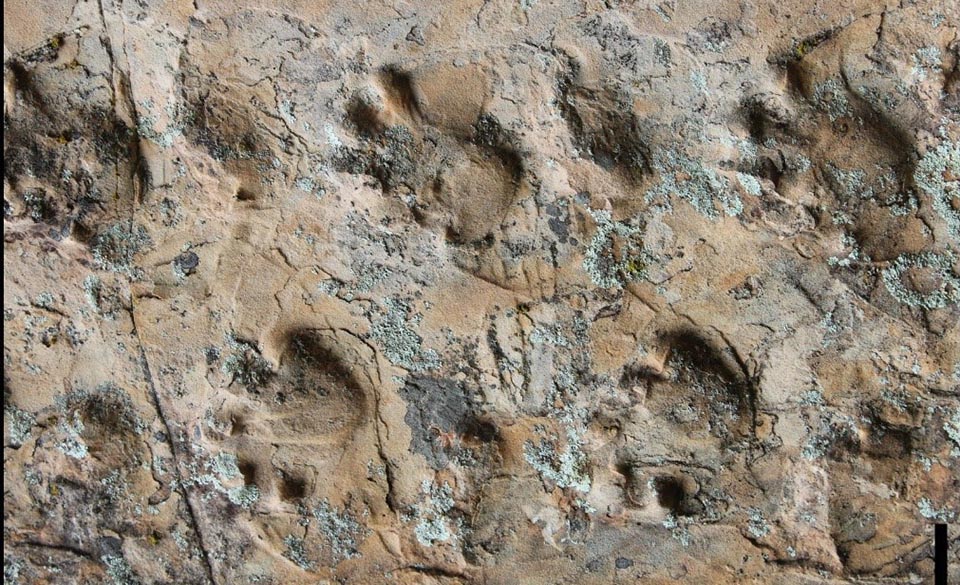Geologists have discovered a set of 28 footprints left behind by an ancient reptile approximately 310 million years ago in what is now Grand Canyon National Park.

Geologists Professor Stephen Rowland and Dr. Mario Caputo discovered that a set of 28 footprints left behind by a reptile 310 million years ago are the oldest ever to be found in Grand Canyon National Park. Image credit: Stephen Rowland.
The fossil trackway covers a boulder that rests along the Bright Angel Trail in Grand Canyon National Park.
“A recent rockfall along the Bright Angel Trail produced two blocks of fine-grained quartz arenite from the Manakacha Formation,” explained University of Nevada’s Professor Stephen Rowland and San Diego State University’s Dr. Mario Caputo.

“The two blocks display part and counterpart surfaces containing a conspicuous vertebrate trackway consisting of 28 tracks, preserved as impressions on one block and natural casts on the opposing block. The trackway extends about 3.3 feet (1 m) across the width of the fallen blocks.”
The Bright Angel Trail trackway dates to the Carboniferous period when one massive supercontinent called Pangaea dominated the world, and is unusual for several reasons.
“It’s the oldest trackway ever discovered in the Grand Canyon in an interval of rocks that nobody thought would have trackways in it, and they’re among the earliest reptile tracks on Earth,” Professor Rowland said.

An illustration of the reptile-like creature making the tracks. Image credit: Stephen Rowland.
“My first impression was that it looked very bizarre because of the sideways motion,” he added.
“It appeared that two animals were walking side-by-side. But you wouldn’t expect two lizard-like animals to be walking side-by-side. It didn’t make any sense.”
“Then I made detailed drawings, and began hypothesizing about the peculiar, line-dancing gait left behind by the creature.”

“One reason I’ve proposed is that the animal was walking in a very strong wind, and the wind was blowing it sideways.”
“Another possibility is that the slope was too steep, and the animal sidestepped as it climbed the sand dune. Or the animal was fighting with another creature, or engaged in a mating ritual.”
The Bright Angel Trail footprints could belong to a reptile species that has never yet been discovered.
“It absolutely could be that whoever was the trackmaker, his or her bones have never been recorded,” Professor Rowland said.
Professor Rowland and Dr. Caputo presented their findings October 17, 2018 at the 78th Annual Meeting of the Society of Vertebrate Paleontology in Albuquerque, New Mexico.
Source: sci.news








